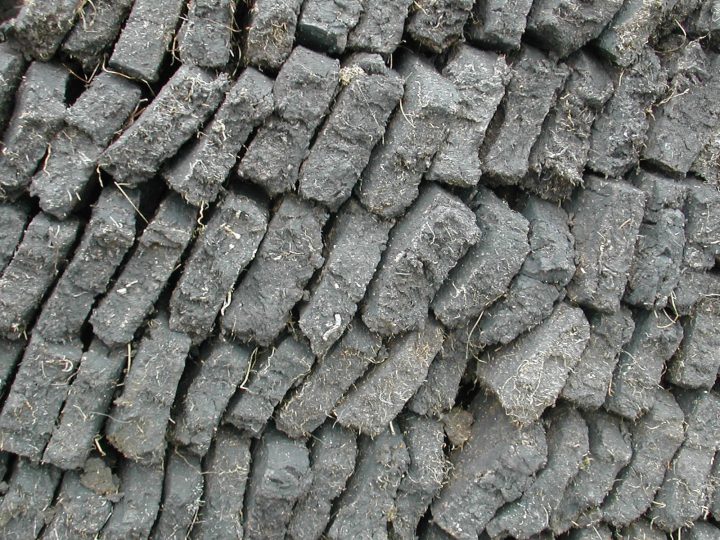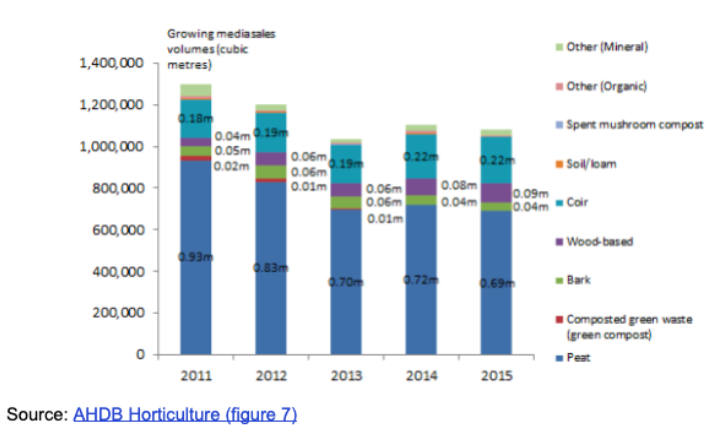For peat's sake!
Cutting peat use and restoring peatlands is vital for cutting the UK's emissions
By Matt Finch
Share
Last updated:
Net zero means changes. There are some changes that are obvious - electric cars will become the norm, solar panels will be everywhere, and gas boilers as we know them will become a thing of the past. Some changes are far more subtle though, and require changes that simply ensure that things look like they have always done. Amazingly, one area of change involves a potentially huge emitter that can be found everywhere.
Restoring Ecosystems
The very soil beneath our feet contains carbon, and therefore how we manage the land is very important. For example in the UK, our peatlands store way, way more carbon than our trees. Globally, peatlands store more carbon than all the world’s forests. A 15cm thick peat layer contains more carbon per unit than a tropical forest. (Given enough time, peatlands would eventually turn into coal).

Peatlands cover around three million hectares of the UK, with most of it - two thirds - in Scotland, and store a massive 3.2 billion tonnes of carbon (2011 figures). This is a potentially significant problem: if a unit of carbon is exposed to the air it immediately joins with oxygen to become CO2 - a greenhouse gas. UK greenhouse gas emissions in 2017 were 456 million tonnes CO2e (carbon dioxide equivalent, a measurement of all greenhouse gases), so you can see just how huge emissions would be should that peatland carbon be released.
UK peatlands are not in good shape though: one estimate states that around 80% of the UK's peatlands are in “poor” condition. And due to this poor management, the UK releases an estimated 18.5 million tonnes of carbon a year from peatlands. The flip side to this is that if left alone and in good condition, the UK’s peatlands become a valuable carbon sink and actually absorb carbon from the air. Restoring peatland ecosystems also brings other benefits, namely flood mitigation and cleaner water.
There are many reasons why peatlands are being degraded, but the overarching one is simple - humans have decided that the land would be better used for something else, often to be either farmed or turned into compost.
Let’s focus on compost though. As of 2010, the UK used three million cubic metres of peat per year for ‘horticulture’, and nearly 70% of that ended up in compost bags bought by the nation's amateur gardeners.
So at first glance, solving this part of the problem would seem quite easy - simply don’t put peat in compost. But peat is quite useful in compost; it retains water (and therefore retains the nutrients in the water), it’s essentially sterile, so is ready to use straight out of the ground, and is relatively cheap to extract. Although it is replaceable - a cursory search around any garden centre will reveal there are many different companies selling peat-free compost - the downside is that alternatives are generally more expensive than the peat alternatives.
Cutting peat use
The environmental consequences of peat extraction and sales are not new; indeed, DEFRA has been aware of the issue for a long time. In 2011, it introduced three targets: a 2015 target for various levels of government to stop using peat, a ‘voluntary’ target for amateur gardeners to phase out the use of peat by 2020, and a similar voluntary 2030 target for professional growers of fruit, vegetables and plants. In addition to these targets, DEFRA is already providing funding for peat restoration projects.

That 2020 target still stands, and was reiterated in DEFRA’s 25 Year Environment Plan, published early last year. It states specifically (on page 45): “If by 2020 we have not seen sufficient movement to peat alternatives, we will look at introducing further measures”, which begs two questions: 1) has there been sufficient movement to peat alternatives? And 2) what “further measures” are being considered?
The answer to the first question is surprisingly difficult to answer since the latest data available (to be found in this report) is from 2015. In 2011 62% of ‘growing media’ (compost, to you and me) consisted of peat. In 2015 - halfway towards a supposed phase out - the percentage had fallen to 56% (and 2015’s percentage was actually higher than 2013 and 2014 (both 55%).
So at first glance this is progress, but clearly it could be better. However, the growing media market is split into two categories: the retail market (think B&Q, aimed at amateur home gardeners), and the professional market (those companies that grow the plants you buy in B&Q), and it should be stressed that it is the retail market that should be on the cusp of a phasing out peat entirely. However, using the 2015 data, this is simply not the case. As the below graph shows, in absolute terms the retail market sold more peat in 2015 than in every year except 2011.

On the other hand, the professional market seems to be making progress, despite the fact that it’s target date is a decade further away. Unlike the retail market, in 2015 the industry used the least amount of peat - something that should be expected if peat use is being phased out:

It’s also worth noting that not all this is “British” peat. In 2017, the UK imported half a million cubic metres of peat, and we are importing more and more every year (which obviously also contributes to CO2 emissions). But this still means that the majority of peat used in this country comes from this country (the cynics will say that importing any peat is yet another example of the UK outsourcing its emissions. They may be right).
Since the retail market is larger, from a climate point of view it is more important. And the above data suggests that the voluntary approach simply has not worked. The answer to question one above then is a resounding “no”. So, with this in mind, what further measures should be considered?
As the UK has declared it wants to become a net zero nation, clearly a specific date for the outright ban of sales of retail peat products is needed. And that date should be soon as well - the industry has had the best part of a decade to prepare, so it's not as if they have not had any warning.
But this is just one measure. DEFRA promised us “further measures”. Could there be a specific additional tax applied to peat products before any outright ban? Could DEFRA fund a massive education campaign aimed at the end buyers? Or will DEFRA bottle it and kick the can down the road (usually by announcing “a consultation”)?
And this is just one side of the market. The ultimate goal is to get to a situation where no peat is being used or extracted, period. This means that DEFRA also has to answer questions about the professional market, imports, exports and the extraction of peat. The (February 2019) National Planning Policy Framework specifically rules out any new licenses being awarded for peat extraction, but what happens to existing licenses? Should they be bought out? Or is it just tough luck on those companies that hold them? And what about peatland that has already been drained and is used for agricultural reasons? Can that be converted back? Should it be?
All of these questions, and more, will be answered in the soon-to-be-released England Peat Strategy. This is important, as despite England only having ¼ of the UK’s peatlands, it accounts for 55% of the emissions. Given the new impetus of ensuring the UK will become a net zero nation, and given the fact that healthy peatlands are a carbon sink, restoring the UK’s peatlands to a healthy state would seem an obvious thing to do. Over to you, DEFRA.
Share